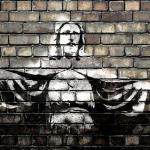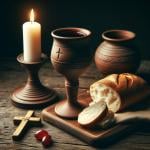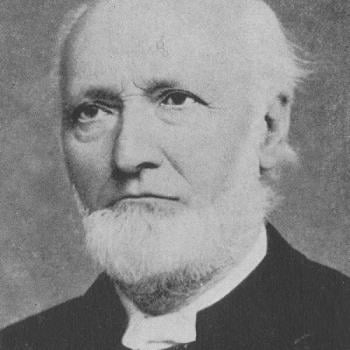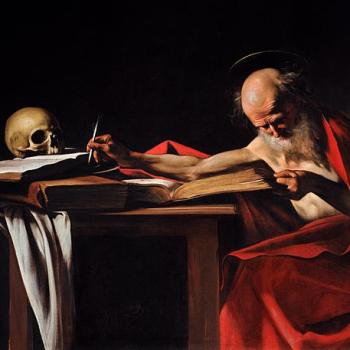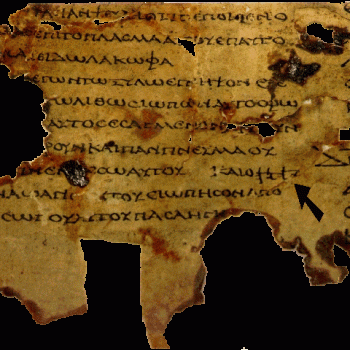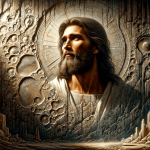Language of “bread” & “wine” after consecration; transubstantiation and transformation: compendium from the Church fathers
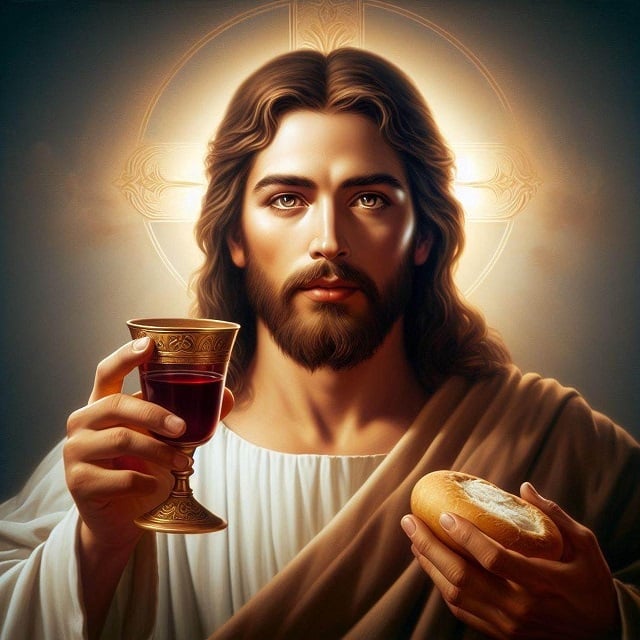
François Turretin (1623-1687) was a Genevan-Italian Reformed scholastic theologian and renowned defender of the Calvinistic (Reformed) orthodoxy represented by the Synod of Dort, and was one of the authors of the Helvetic Consensus (1675). He is generally considered to be the best Calvinist apologist besides John Calvin himself. His Institutes of Elenctic Theology (three volumes, Geneva, 1679–1685) used the scholastic method. “Elenctic” means “refuting an argument by proving the falsehood of its conclusion.” Turretin contended against the conflicting Christian perspectives of Catholicism and Arminianism. It was a popular textbook; notably at Princeton Theological Seminary, until it was replaced by Charles Hodge‘s Systematic Theology in the late 19th century. Turretin also greatly influenced the Puritans.
This is a reply to portions of a section of Institutes of Elenctic Theology (Vol. 3, 19th Topic: The Sacraments / 27th Question: Transubstantiation). I utilize the edition translated by George Musgrave Giger and edited by James T. Dennison, Jr. (Presbyterian and Reformed Publishing Company, Phillipsburg, New Jersey: 1992 / 1994 / 1997; 2320 pages). It uses the KJV for Bible verses. I will use RSV unless otherwise indicated. All installments of this series of replies can be found on my Calvinism & General Protestantism web page, under the category, “Replies to Francois Turretin (1632-1687).” Turretin’s words will be in blue.
*****
Third, the testimony of faith bears specially upon this subject, which confirms the testimony of the senses and of reason and teaches that the invention of transubstantiation is no less repugnant to Scripture and the analogy of faith than to the senses and reason. Here belong all those arguments adduced from the Scriptures in the preceding question. To them we add the following. First, from the passages where the Eucharistic symbols retain the same name after the consecration which they had before (namely, the name of bread and wine). This would not have been done if in virtue of the consecratory words they had ceased to be bread and wine and were changed into the body and blood of Christ.
St. Paul refers to “eat this bread and drink the cup” (1 Cor 11:26) but in the same context also expresses himself literally: “Whoever, therefore, eats the bread or drinks the cup of the Lord in an unworthy manner will be guilty of profaning the body and blood of the Lord. . . . For any one who eats and drinks without discerning the body eats and drinks judgment upon himself” (11:27, 29). He speaks in both ways, here and in 1 Corinthians 10:16-17 (“The bread which we break, is it not a participation in the body of Christ?”).
Jesus did the same in John 6:51 (“if any one eats of this bread, he will live for ever; and the bread which I shall give for the life of the world is my flesh”) and in Matthew 26:26 (“Jesus took bread, and . . . gave it to the disciples and said, “Take, eat; this is my body”). The metaphorical use refers to the accidents of outward appearance, while the literal use refers to transubstantiation and the body and blood of the Lord. It seems to me the only way to interpret these two complementary motifs is as I have done (or else as Lutherans do: with bread and wine and the body and blood both continuing to be present after consecration). Otherwise, we are left with mere bread and wine being passed out, and no body and blood of Christ at all, or Jesus ludicrously being equated with mere bread and wine, and the Bible disallows that.
Note also that Paul’s use of “drink the cup” (1 Cor 11:26-27). No one can literally “drink a cup” and must drink what it contains. But how do we know what is in this cup? We know by the context and in this instance it highly suggests, or, I submit, virtually demands, a reading that it contains Jesus’ blood. (“In the same way also the cup, after supper, saying, ‘This cup is the new covenant in my blood . . .'”: 1 Cor 11:25). Again, Paul writes in the previous chapter, “The cup of blessing which we bless, is it not a participation in the blood of Christ?” (1 Cor 10:16). It’s the same scenario at the Last Supper (“And he took a cup, and when he had given thanks he gave it to them, saying, “Drink of it, all of you; for this is my blood of the covenant, . . .”: Mt 26:27-28). Thus, three times, it’s made crystal clear that we drink Christ’s transubstantiated blood, just as He repeatedly said that we must do to be saved, in John 6.
Beyond these factors, we could also say that general use of “bread” and “wine” after consecration is simply referring to the appearance, which is what Catholics refer to when we say that these are the “accidents” of the body and blood of Christ.
But to what purpose would Paul so often without any limitation call it bread, if it was no longer bread?
To call it what it looked like. In effect, he — like Jesus — was describing the accidental properties, since in context he also refers to “the body” and/or “the blood.” The latter fact can’t be ignored by Protestants bent on a wrongheaded, eisegetical symbolic interpretation.
Would he not on this point have afforded to believers an occasion of erring by believing that to be true bread which was anything else than bread?
No; he avoids giving that impression by also mentioning “body” and “blood” in the same context. Jesus does the same, as shown above.
The eighth class is drawn from the testimony of a purer antiquity. That the dogma of transubstantiation was unknown to it, both their writings testify (as we have seen) and many of our opponents are compelled to confess, however they may try to draw them over to their side. Peter a Marca, Archbishop of Paris, yields to us the suffrages of most of the fathers, especially of Chrysostom, Epiphanius, Irenaeus, Cyprian, Theodoret, . . .
If it is afterwards inquired when and how this monstrous dogma was introduced into the church, the answer is easy. It is recent and newfangled, not a trace of it occurring among the ancients even down to the eighth century. . . .
It is evident that it was not settled before the Council of Trent. Now let our opponents go and glory in its antiquity.
Glad to do so! One wearies of having to prove the same obvious thing over and over, but here goes. First, here are two prominent Protestant historians of Christian doctrine, providing an overview of patristic belief regarding the Eucharist:
In general, this period, . . . was already very strongly inclined toward the doctrine of transubstantiation, and toward the Greek and Roman sacrifice of the mass, which are inseparable in so far as a real sacrifice requires the real presence of the victim…… (Philip Schaff, History of the Christian Church, vol. 3, A. D. 311-600, revised 5th edition, Grand Rapids, Michigan: Eerdmans, reprinted 1974, originally 1910, p. 500)
Theodore [c. 350-428] set forth the doctrine of the real presence, and even a theory of sacramental transformation of the elements, in highly explicit language . . . ‘At first it is laid upon the altar as a mere bread and wine mixed with water, but by the coming of the Holy Spirit it is transformed into body and blood, and thus it is changed into the power of a spiritual and immortal nourishment.’ [Hom. catech. 16,36] these and similar passages in Theodore are an indication that the twin ideas of the transformation of the eucharistic elements and the transformation of the communicant were so widely held and so firmly established in the thought and language of the church that everyone had to acknowledge them. (Jaroslav Pelikan [at this time a Lutheran], The Emergence of the Catholic Tradition (100-600), Chicago: Univ. of Chicago Press, 1971, 236-237)
And here is just a small representative sampling of the fathers themselves:
St. Ignatius of Antioch: They abstain from the Eucharist and from prayer, because they confess not the Eucharist to be the flesh of our Saviour Jesus Christ, which suffered for our sins, and which the Father, of His goodness, raised up again. (Letter to the Smyrnaeans, ch. 7)
St. Justin Martyr: Likewise have we been taught that the food which is blessed by the prayer of His word, and from which our blood and flesh by transmutation are nourished, is the flesh and blood of that Jesus who was made flesh. (First Apology, chapter 66)
St. Irenaeus: . . . the bread which is His body. . . . the Eucharist, which is the body and blood of Christ . . . (Against Heresies, V, 2, 3)
Tertullian: He declared plainly enough what He meant by the bread, when He called the bread His own body. He likewise, when mentioning the cup and making the new testament to be sealed “in His blood,” affirms the reality of His body. For no blood can belong to a body which is not a body of flesh. (Against Marcion, Book IV, chapter 40)
Origen: You know how, when you have received the Body of the Lord, you reverently exercise care lest a particle fall, and lest anything of the consecrated gift perish. . . . you observe such caution in keeping His Body, and properly so, . . . (Homilies on Exodus, 13, 3)
St. Cyprian: And therefore we ask that our bread—that is, Christ—may be given to us daily, that we who abide and live in Christ may not depart from His sanctification and body. (On the Lord’s Prayer / Treatise IV, 18)
St. Hilary of Poitiers: As to the verity of the flesh and blood there is no room left for doubt. For now both from the declaration of the Lord Himself and our own faith, it is verily flesh and verily blood. And these when eaten and drunk, bring it to pass that both we are in Christ and Christ in us. Is not this true? (The Trinity, Book VIII, 14, 17)
St. Athanasius: You will see the Levites bringing loaves and a cup of wine, and placing them on the table. So long as the prayers and invocations have not yet been made, it is mere bread and a mere cup. But when the great and wondrous prayers have been recited, then the bread becomes the body and the cup the blood of our Lord Jesus Christ. . . . When the great prayers and holy supplications are sent up, the Word descends on the bread and the cup, and it becomes His body. (Sermon to the Newly-Baptized)
St. Basil the Great: It is good and beneficial to communicate every day, and to partake of the holy body and blood of Christ. . . . once the priest has completed the offering . . . (Letter XCIII, To the Patrician Cæsaria)
St. Cyril of Jerusalem: For as the Bread and Wine of the Eucharist before the invocation of the Holy and Adorable Trinity were simple bread and wine, while after the invocation the Bread becomes the Body of Christ, and the Wine the Blood of Christ . . . (Catechetical Lecture XIX, 7)
Having learnt these things, and been fully assured that the seeming bread is not bread, though sensible to taste, but the Body of Christ; and that the seeming wine is not wine, though the taste will have it so, but the Blood of Christ . . . (Catechetical Lecture XXII, 9)
J. N. D. Kelly summarizes Cyril’s eucharistic theology:
Even the pioneer of the conversion doctrine, Cyril of Jerusalem, is careful to indicate that the elements remain bread and wine to sensible perception, and to call them ‘the antitype’ of Christ’s body and blood: ‘the body is given to you in the figure of bread, and the blood is given to you in the figure of wine’. (Cat. 22, 9; 23, 20; 22, 3)
. . . He uses the verb ‘change’ or ‘convert’, pointing out that, since Christ transformed water into wine, which after all is akin to blood, at Cana, there can be no reason to doubt a similar miracle on the more august occasion of the eucharistic banquet. (Cat., 22, 2)
Chrysostom exploits the materialist implications of the conversion theory to the full . . . Thus the elements have undergone a change, and Chrysostom describes them as being refashioned or transformed. In the fifth century conversionist views were taken for granted by Alexandrians and Antiochenes alike. According to Cyril . . . the visible objects are not types or symbols . . . but have been transformed through God’s ineffable power into His body and blood. Elsewhere he remarks that God ‘infuses life-giving power into the oblations and transmutes them into the virtue of His own flesh.’ (Chrysostom: In prod. Iud. hom. I, 6; in Matt. hom. 82, 5; Cyril: In Matt. 26,27; In Luc. 22, 19) (Early Christian Doctrines, San Francisco: Harper & Row, 5th revised edition, 1978, 441, 443-444)
See also:
John Calvin and St. Cyril of Jerusalem: Comparative Eucharistic Theology [6-14-04]
St. Gregory of Nyssa: So nourishment (bread and wine) by becoming flesh and blood gives bulk to the human frame: the nourishment is the body. Just as in the case of other men, our Saviour’s nourishment (bread and wine) was His Body; but these, nourishment and Body, were in Him changed into the Body of God by the Word indwelling. So now repeatedly the bread and wine, sanctified by the Word (the sacred Benediction), is at the same time changed into the Body of that Word; and this Flesh is disseminated among all the Faithful. (The Great Catechism, chapter XXXVII; the footnote in NPNF 2 for this passage states: “Gregory distinctly teaches a transmutation of the elements very like the later transubstantiation: he also distinctly teaches that the words of consecration effect the change. There seems no reason to doubt that the text is correct.”)
St. Ambrose: We observe, then, that grace has more power than nature, and yet so far we have only spoken of the grace of a prophet’s blessing. But if the blessing of man had such power as to change nature, what are we to say of that divine consecration where the very words of the Lord and Saviour operate? For that sacrament which you receive is made what it is by the word of Christ. But if the word of Elijah had such power as to bring down fire from heaven, shall not the word of Christ have power to change the nature of the elements? You read concerning the making of the whole world: “He spake and they were made, He commanded and they were created.” Shall not the word of Christ, which was able to make out of nothing that which was not, be able to change things which already are into what they were not? For it is not less to give a new nature to things than to change them. . . . The Lord Jesus Himself proclaims: “This is My Body.” Before the blessing of the heavenly words another nature is spoken of, after the consecration the Body is signified. He Himself speaks of His Blood. Before the consecration it has another name, after it is called Blood. (On the Mysteries, Chapter IX, 50, 52-55)
St. John Chrysostom: It is not a man who makes the sacrificial gifts become the Body and Blood of Christ, but He that was crucified for us, Christ Himself. The priest stands there carrying out the action, but the power and grace is of God. “This is My Body,” he says. This statement transforms the gifts. (Homilies on the Treachery of Judas, 1, 6)
St. Augustine: For not all bread, but only that which receives the blessing of Christ, becomes Christ’s body. (Sermons, 234, 2)
J. N. D Kelly states (citing Ennar. 98):
One could multiply texts like these which show Augustine taking for granted the traditional identification of the elements with the sacred body and blood. There can be no doubt that he [Augustine] shared the realism held by almost all of his contemporaries and predecessors. (Early Christian Doctrines, San Francisco: Harper & Row, 1978, 447)
See also:
St. Augustine’s Belief in the Substantial Real Presence [1996]St. Augustine’s Eucharistic Doctrine and Protestant “Co-Opting” [9-25-10]
*
St. Cyril of Alexandria: He states demonstratively: “This is My Body,” and “This is My Blood“(Mt. 26:26-28) “lest you might suppose the things that are seen as a figure. Rather, by some secret of the all-powerful God the things seen are transformed into the Body and Blood of Christ, truly offered in a sacrifice in which we, as participants, receive the life-giving and sanctifying power of Christ. (Commentary on Matthew [Mt. 26:27] )
Moreover, the belief of these same Church fathers, en masse, in the Sacrifice of the Mass attests to their eucharistic realism, over against Calvin’s and Turretin’s mere mystical symbolism and denial of the substantial, bodily Real Presence of Jesus in the Holy Eucharist.
*
***
*
Photo credit: image by VilmaAndrade (6-5-24) [Pixabay / Pixabay Content License]
Summary: Calvinist theologian François Turretin says transubstantiation is impossible due to post-consecration biblical references to “bread” & “wine” & alleged absence in the fathers.


